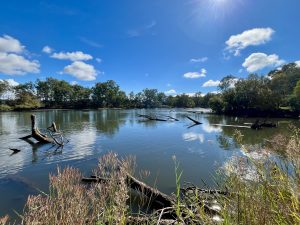Wildflower walks, night spotlighting for possums and other critters, monitoring nestboxes for endangered species… These are the glamourous end of the range when it comes to bush restoration. We love to get out into the bush and open people’s eyes to the treasures we have in our backyard, explore the lesser known spots and notch up another species in our records of sightings.
In reality, more than 90% of our Rangers’ time is dedicated to working with volunteers on the repetitive work of preventing decline in our roadsides and bush reserves; treating environmental weeds and slashing spring growth to reduce fire risk being the most time consuming of all.
Cleaning up rubbish, removing old fences and replacing with new – this is the type of work that is hardly noticed when it is done, but definitely noticed if it is not done. These jobs are the backbone of bush restoration.
Then comes re-planting, guarding and weed management as new plants grow, along with working with neighbours to prevent livestock access and other damaging activities. Once plants are well grown, guards must be collected, sorted and stored for re-use. Perhaps nestboxes are installed to provide homes for native animals who can take advantage of the renewed bush. Monitoring and maintenance tasks are then added to the schedule.
Underpinning all is the task of preventing invasion by non-native species; plants, animals and birds. Environmental weeds from agricultural pasture grasses to domestic garden plants are the greatest threat, able to seed and spread easily and often aided by introduced species like foxes and blackbirds who love to eat berries and spread them far and wide. In our fast growing suburbs new residents are often completely unaware of the scope for their garden plants to escape, actively planting invasive plants.
In the face of this ever-renewed challenge, it is community volunteers who consistently rise to the effort. While boosted by youth training programs like Green Corps and the Green Army over the years, much bush restoration work in our region is achieved by individual volunteers who work with our rangers or quietly get on with the job in their own local areas. They remove weeds in their local reserves and help with community awareness raising through programs like Gardens for Wildlife.
If you would like to do something towards bush restoration please get in touch with us at info@parklands-alburywodonga.org.au or check out the Gardens for Wildlife Albury-Wodonga page at G4W-AW






